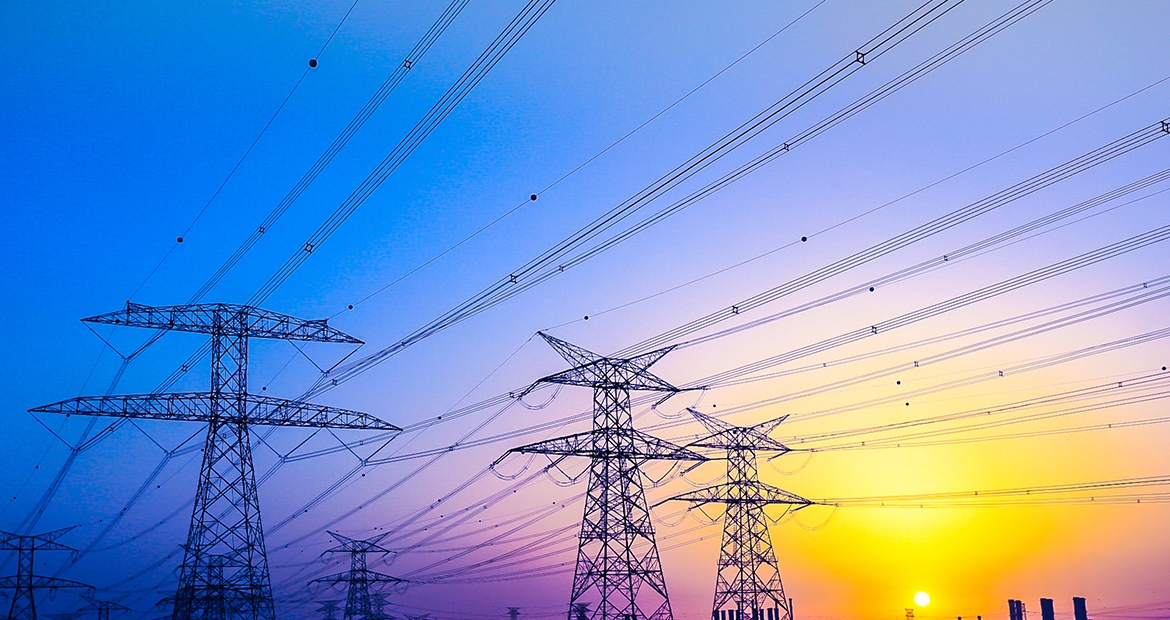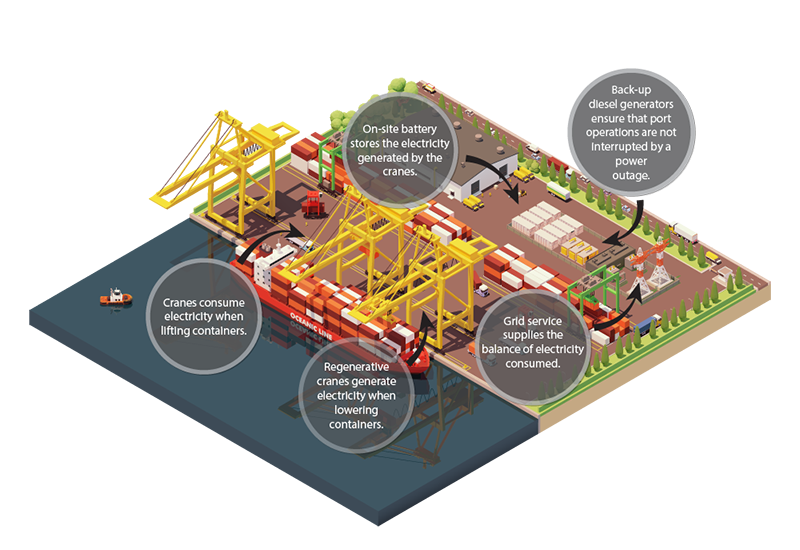Types of microgrids, with examples
No two microgrids are the same. Check out types of microgrids with real life case studies.
By Aytek Yuksel, Content Marketing Leader - Power Systems

Microgrids are not fundamentally different from wide-area grids. They support smaller loads, serve fewer consumers, and are deployed over smaller areas. But microgrids and wide-area grids have the same job within the power generation eco-system, distributing electricity, and the same constraints, perfectly matching generation and load at all times.
Microgrids existed before anybody used the word microgrid. For example, smaller islands have electric grids which usually qualify as microgrids. Likewise, in the early days of electricity, the individual systems of private utilities were microgrids. Over time, almost all of those individual systems were linked, resulting in continent-wide interconnections.
Microgrids, however, are making a comeback. They are seen as a practical, cost-effective way to integrate local renewable energy resources, and to provide redundancy and resilience. There are two categories of microgrids, off-grid and grid-connected and each encompass many different setups.
Off-grid microgrids
Off-grid microgrids are constructed where there is a significant need for electricity but no access to a wide-area electrical grid.
Islands that are too far from the mainland are typically served by their own microgrid. In the past, island microgrids were usually built around diesel or heavy fuel oil generators. While easy to transport and easy to store, these fuels could prove to be expensive. However, in the absence of a suitable alternative, many islands continue to rely heavily on such generators.
Why were suitable alternatives absent? Islands have more than enough wind and plenty of sun. Yes, but integrating large quantities of solar arrays and wind turbines on the electrical system of an island can be very difficult. Diesel generators can be switched on and off, on-demand. They have the capability to closely match the electrical demand of the island as it increases and decreases. Wind turbines, in contrast, produce electricity when there is wind. Solar panels work when the sun is shining. If the wind abates or if clouds obscure the sun for moments, another source of electricity needs to be available to pick up the slack and meet the electrical load demand. This type of dynamic management of generation and demand requires sophisticated supervisory controls and advanced power electronics. In the past neither were a practical option for small-scale island systems.
Today, modern microgrid features allow island utilities to integrate larger quantities of intermittent renewable resources such as solar and wind. Stationary energy storage, in particular, is extremely helpful in managing transitions between intermittent resources and traditional generators.
Island utilities find that investing in a modern microgrid grants multiple benefits. Generating more electricity from renewable resources allows islands to reduce both their fuel costs and the local environmental impact associated with the use of those fossil fuels. Using their generators in a more optimized way allows island utilities to reduce maintenance costs, increase efficiency, and, in many cases, reduce the number of generators needed on the island. The reliability of the electrical system is also improved, leading to better service quality and less frequent outages.
You can find a real life example at Calvert Island in British Columbia, Canada, where Cummins Inc. was involved in a project to upgrade the island’s microgrid.
Off-grid microgrids also exist in remote areas. Many settlements in Siberia and in Northern Canada, for example, are not connected to any outside electrical system. Remote industrial operations also possess a self-sufficient electrical system. Mines, in particular, require large and robust electrical installations.
These remote electrical systems are required to ship diesel, fuel oil or other liquid fuels over long distances. Unsurprisingly, this can quickly become very expensive. Imagine trucking fuel across hundreds of miles of frozen terrain or on a dirt road. As a result, the owners of these remote industrial operations are eager to deploy as much renewable power as possible, along with sophisticated microgrids to effectively integrate and distribute that power. Some mines also seek to synthesize their own fuel on site using renewable electricity.
Grid-connected microgrids
You don’t need to be on an island or in the middle of the desert to benefit from a microgrid.
In fact, many microgrid users are located in urban or industrial areas that are fully served by an electric utility. Why do businesses and institutions go through the trouble of investing in a microgrid when they can simply receive electricity from the utility? There are two main reasons.
One reason is that they want to avoid power outages.
Homeowners invest in a home generator for the same reason. The difference between a home with a generator and, for example, a military base with a microgrid is complexity and scale. A home has one, maybe two electrical panels. All it takes to integrate a home generator to a residential electricity system is a transfer switch.
A military base includes dozens of buildings, several generators and a variety of critical electrical equipment such as radars and air traffic control systems, often spread over hundreds of acres. Integrating these components requires a sophisticated electrical infrastructure—in other words, a microgrid.
Civilian facilities with complex electrical systems incorporate microgrids to ensure the reliability of their electrical service as well. Hospitals, airports, university campuses and large industrial plants all utilize microgrid components to effectively integrate backup power generation into their electrical system.
The other reason that motivates grid-connected facilities to invest in a microgrid is cost: A microgrid encapsulates all of a facility’s electrical equipment.

From the perspective of the utility, only one electrical meter is seen. This allows the microgrid owner to deploy solar arrays, wind turbines, backup or prime power generators and other electrical equipment without direct connection to the utility grid.
Many port operators, for example, own a type of shipping container crane known as regenerative cranes. Regenerative cranes consume electricity when they lift a container, and generate electricity when they lower a container. Few utilities would allow this type of electrical equipment to be directly connected to their grid—at least not with the regenerative mode enabled. Port operators therefore create microgrids connecting their cranes (as well as backup generators). This allows the cranes that are lowering containers to provide electricity to the cranes that are lifting containers. This results in a dramatic reduction in the net electrical consumption supported by the utility, and, thus, in savings for the port operator.
Microgrid options are driven by the global imperative to move quickly to renewable energy for power generation. They also allow facility owners to meet immediate practical needs. Improvements in microgrid technology mean that the possibilities for both large and small, connected, or remote microgrids are increasing. Modern microgrids are making innovations in electricity generation possible in all corners of the globe.
Interested in more on microgrids? You might also like:
- Benefits of microgrids, and why do businesses need them?
- Examples on where microgrids are used
- Components of microgrids
- What is a microgrid and how microgrids work
Sign up for Energy IQ to receive energy focused insights in markets ranging from data centers and healthcare facilities, to schools and manufacturing facilities, and everything beyond.
Author Profiles

Aytek Yuksel, Content Marketing Leader - Power Systems
Aytek is a marketing leader at Cummins, focusing on technology and thought leadership. Since joining in 2008, he has held various marketing roles and now shares insights on markets, technologies, and energy transition. Aytek lives in Minneapolis with his wife and two kids.
Related Tags